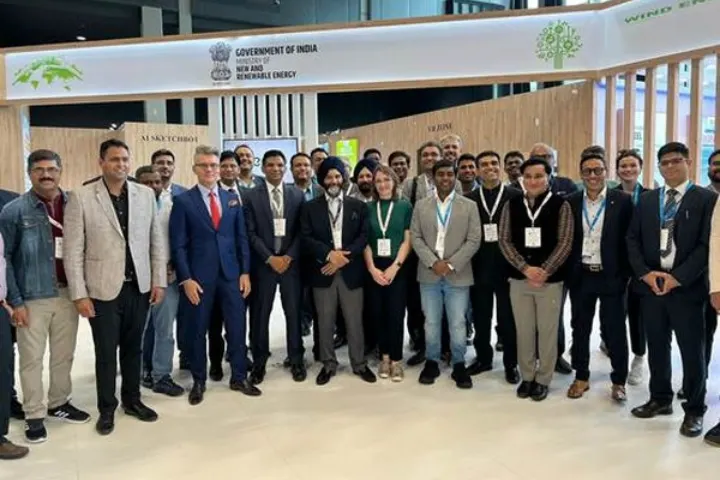

India showcases its green hydrogen potential at World Hydrogen Summit 2024 in Netherlands (Photo: PIB)
For the first time, India has set up its pavilion, at the World Hydrogen Summit 2024, being held in Rotterdam, Netherlands, during May 13-15.
The India Pavilion, set up by the Ministry of New and Renewable Energy is said to be one of the largest pavilions at the Summit.
The World Hydrogen Summit is a prestigious event in the global green hydrogen ecosystem. Around 15,000 delegates from around the world are attending the Summit.
The India Pavilion at the conference provides India with an opportunity to showcase to the world the progress made by the country in the field of Green Hydrogen.
The Indian delegation comprises nominees from the Ministry of New and Renewable Energy, the Department of Science and Technology, the Ministry of Railways, the Ministry of Petroleum and Natural Gas and from private sector companies as well. In addition to various government-to-government interactions, the Summit provides a platform for Indian industry to engage with companies from around the globe.
India launched its National Green Hydrogen Mission in January 2023 with an overall outlay of Rs 19,744 crores. India has set an ambitious target to achieve a green hydrogen production capacity of 5 million tonnes by the end of the year 2030.
As on date, the Ministry of New and Renewable Energy has awarded tenders for setting up 412,000 tonnes of Green Hydrogen production capacity and 1,500 MW of electrolyzer manufacturing capacity.
India meets a sizable portion of its energy needs through fossil fuels, and various renewable energy sources, including green hydrogen, are seen as an avenue to reduce the dependence on conventional sources of power.
At COP26 held in 2021, India committed to an ambitious five-part “Panchamrit” pledge. They included reaching 500 GW of non-fossil electricity capacity, generating half of all energy requirements from renewables, to reducing emissions by 1 billion tonnes by 2030.
India as a whole also aims to reduce the emissions intensity of GDP by 45 per cent. Finally, India commits to net-zero emissions by 2070.
About 44 per cent of India’s energy requirements at present come from non-fossil sources and are likely to touch as high as 65 per cent by 2030, much higher than what the country pledged at the COP summit in 2021, Union Minister RK Singh, who handles power and renewable portfolio, said recently.
In a major boost to India's coastal defence capabilities, the Indian Navy on Wednesday commissioned…
Volker Turk, the UN High Commissioner for Human Rights, on June 17 expressed concern over…
Prime Minister Narendra Modi addressed the G7 Outreach Session on the theme 'Energy Security: diversification,…
Prime Minister Narendra Modi held a telephonic conversation with US President Donald Trump on the…
The launch of Axiom Mission 4, the fourth private astronaut mission to the International Space…
The Embassy of Iran in India on Wednesday shared a statement made by the Director-General…